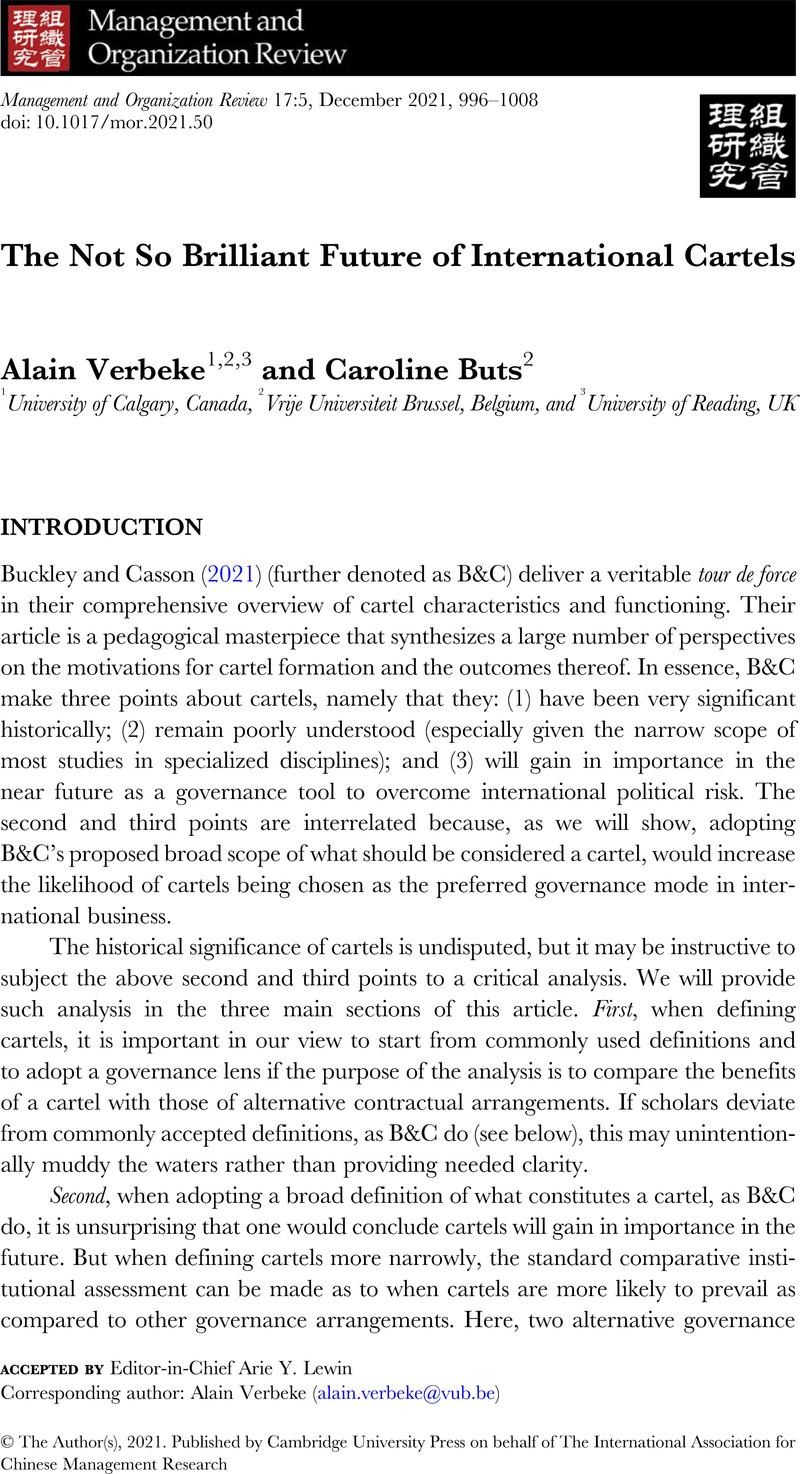Crossref Citations
This article has been cited by the following publications. This list is generated based on data provided by Crossref.
2021.
Letter from the Editor.
Management and Organization Review,
Vol. 17,
Issue. 5,
p.
881.
Mares, David R.
2022.
Understanding Cartel Viability: Implications for a Latin American Lithium Suppliers Agreement.
Energies,
Vol. 15,
Issue. 15,
p.
5569.
Verbeke, Alain
Oh, Chang Hoon
and
Jain, Rajesh
2025.
What is the future of regional multinational enterprises?.
International Business Review,
p.
102442.




Target article
Multinational Enterprises and International Cartels: The Strategic Implications of De-globalization
Related commentaries (2)
Comments on ‘Multinational Enterprises and International Cartels: The Strategic Implications of De-gobalization’ by Peter J. Buckley and Mark Casson
The Not So Brilliant Future of International Cartels